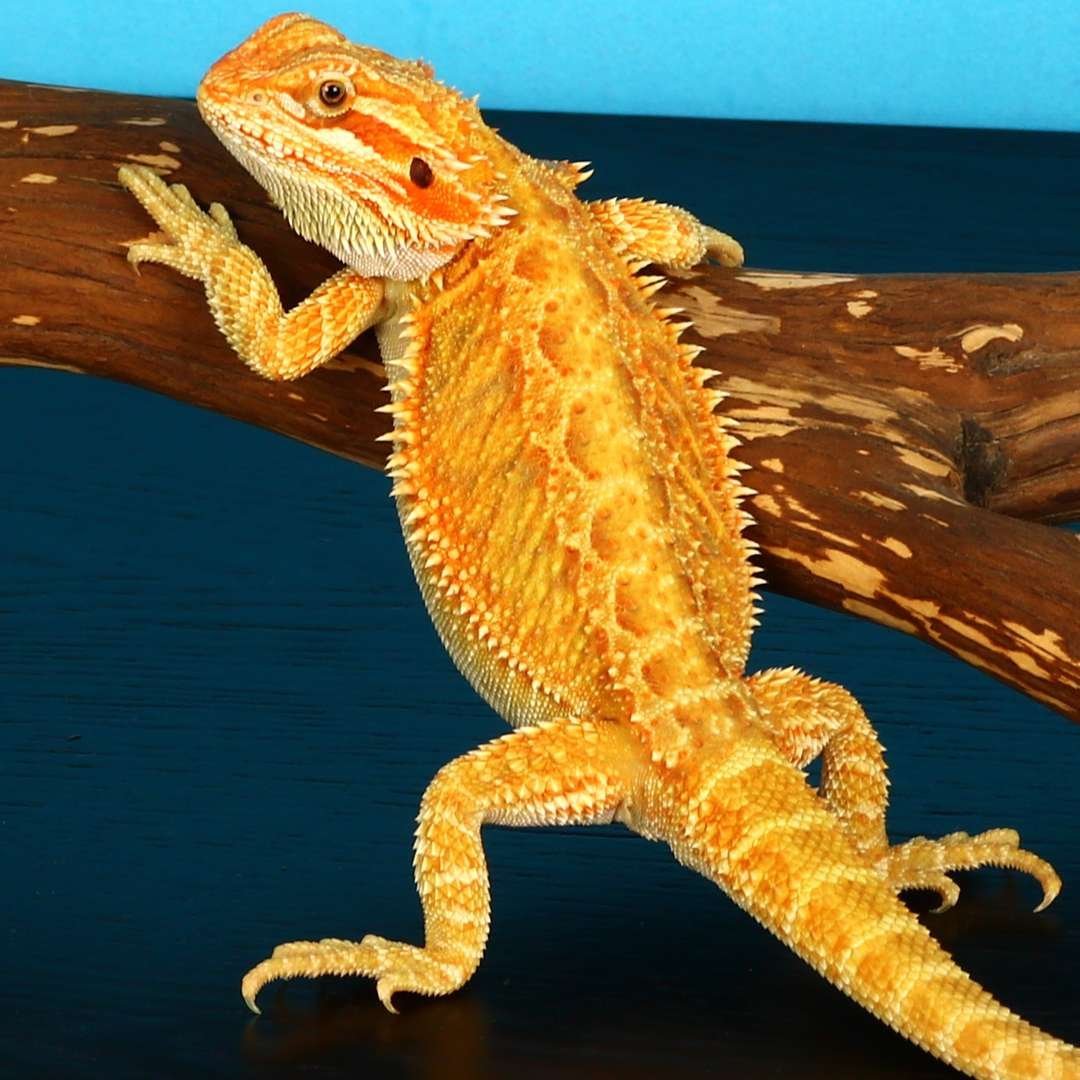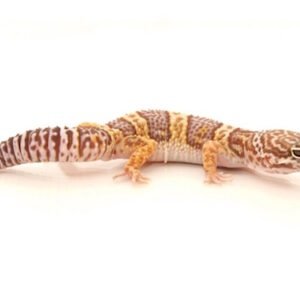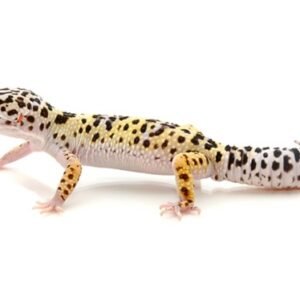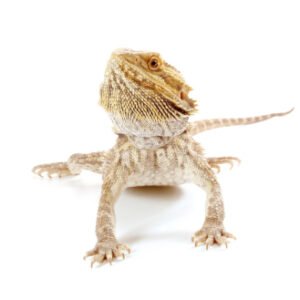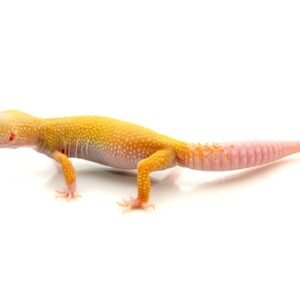The Fascinating World of Orange Bearded Dragons
Introduction to Bearded Dragons
Bearded dragons are a captivating group of reptiles belonging to the family Agamidae, originating from Australia. Their name is derived from the distinct “beard” of spiny scales they possess beneath their jaws, which they can puff out when threatened. Bearded dragons are well known for their docile temperament, making them a popular choice among reptile enthusiasts and first-time pet owners alike.
In the wild, bearded dragons inhabit a variety of environments, ranging from arid deserts to scrublands, where they thrive in warm temperatures. Their natural habitat is characterized by ample sunlight, which is essential for their well-being. The species has adapted to survive in these conditions by exhibiting behaviors such as basking to regulate their body temperature and foraging for a diverse diet of insects and vegetation.
There are several types of bearded dragons, with the most common species being the central bearded dragon (Pogona vitticeps). Among the various morphs available, the orange morph stands out due to its vibrant and striking coloration. This color variation is highly sought after by hobbyists, contributing significantly to their popularity in the pet trade. Beyond aesthetics, bearded dragons possess unique behavioral traits; they are known for their interactive nature, often displaying curiosity towards their owners.
When considering keeping a bearded dragon as a pet, it is crucial to understand their care requirements. These reptiles require a temperature gradient in their enclosure, with a basking spot that reaches around 100°F and a cooler area of approximately 75°F. Additionally, a proper UVB lighting setup is essential for their health, allowing them to synthesize vitamin D3 for calcium absorption. Regular feeding, hydration, and social interaction play key roles in maintaining their physical and mental well-being, ensuring that these captivating reptiles thrive in a home environment.
Understanding the Orange Morph
The orange bearded dragon has captured the attention of reptile enthusiasts and pet owners alike with its stunning and vibrant coloration. This unique morph is a result of selective breeding practices aimed at enhancing specific color traits. The orange hue in these bearded dragons is not merely a pigment; rather, it reflects the complex interplay of genetics responsible for color variation within the species. Breeders have meticulously paired individual dragons over generations to produce offspring with more pronounced and vivid orange tones. This breeding process often involves combining various color morphs to create dragons that exhibit a blend of unique attributes.
Genetics plays a significant role in determining the color and overall appearance of orange bearded dragons. Different genes influence color saturation, shading, and even patterns on the skin. As a result, the orange variant often appears alongside other morphs, showcasing the incredible diversity within the bearded dragon community. This has not only led to an increasing fascination with these reptiles but also contributes to the popularity of orange bearded dragons in the pet industry. Collectors and hobbyists are drawn to the idea of owning a striking creature that stands out from traditional morphs, which often feature earthy tones.
Despite their alluring appearance, potential owners should consider specific health considerations associated with orange bearded dragons. Like other bearded dragons, they require a balanced diet, proper UV lighting, and temperature regulation in their habitat to thrive. Additionally, the popularity of this morph has led to an increase in irresponsible breeding practices, which can result in genetic health issues. Prospective owners are encouraged to research reputable breeders who prioritize the health and welfare of their animals over mere aesthetic appeal. Understanding the intricacies of the orange morph is essential for maintaining the well-being of these extraordinary reptiles.
Care Guidelines for Orange Bearded Dragons
Orange bearded dragons require specific care to thrive and showcase their striking coloration. A properly designed habitat is crucial for their health and well-being. Ideally, the enclosure should be spacious, allowing for plenty of movement. A 40-gallon tank is a minimum requirement for an adult orange bearded dragon, featuring a secure lid, as they are known for their climbing abilities. The habitat should include a variety of substrates; choices such as sand or reptile carpet can provide a comfortable environment. Adding branches, rocks, and hiding spots will facilitate exploration and reduce stress.
Diet plays a significant role in maintaining the vibrant colors of your orange bearded dragon. A balanced diet should consist of a combination of insects like crickets and mealworms, along with leafy greens, vegetables, and occasional fruits. It is essential to dust their food with calcium and vitamin D3 supplements regularly to prevent nutritional deficiencies. Fresh water should always be accessible, as hydration is vital for overall health and vibrant coloration.
Temperature and lighting are critical factors in the care of orange bearded dragons. They require a basking area with a temperature between 95°F and 110°F to promote proper digestion and metabolic processes. The cooler side of the habitat should be maintained at around 75°F to 85°F, allowing them to regulate their body temperature effectively. Providing a UVB light source is equally important, as it helps with vitamin D synthesis, ensuring strong bones and rich pigmentation.
Regular health monitoring is necessary to ensure your orange bearded dragon remains in optimal condition. Observing their behavior, appetite, and physical appearance can help identify health issues early. Routine veterinary check-ups are advisable, offering peace of mind regarding their health status. With proper care, orange bearded dragons can live 10-15 years, delighting their owners with their beauty and vibrancy throughout their lives.
Common Health Issues and Tips for Owners
Orange bearded dragons, like all reptiles, can experience various health issues throughout their lives. Understanding these common health problems is crucial for owners aiming to provide optimal care. One prevalent condition is metabolic bone disease (MBD), often caused by inadequate calcium and vitamin D3 intake. MBD can lead to severe complications, including deformities and lethargy. Owners should ensure a well-balanced diet rich in calcium, supplemented with appropriate UVB lighting to promote nutrient absorption.
Another significant health concern is gastrointestinal impaction, which can result from the ingestion of inappropriate substrates or lack of hydration. Signs of this condition may include lethargy, lack of appetite, or swelling in the abdomen. To prevent this issue, it is vital to provide suitable substrates, such as reptile carpet or paper towels, and to monitor hydration levels, ensuring fresh water is always available.
Respiratory infections can also affect orange bearded dragons, manifested by symptoms like wheezing or nasal discharge. These infections are often linked to stress, poor environmental conditions, or temperature fluctuations. Owners can minimize stress by maintaining a stable habitat that adheres to temperature and humidity requirements. Implementing regular veterinary check-ups is essential for early detection of these health concerns. Regular appointments allow veterinarians to assess the dragon’s health, provide vaccinations, and offer guidance on diet and care.
Lastly, it is vital for owners to keep an eye out for behavioral changes, as these can indicate underlying health issues. Monitoring your orange bearded dragon’s eating habits, shedding patterns, and general demeanor can help in recognizing potential health problems early. By understanding these common health issues and following preventive measures, owners can maintain the wellness of their orange bearded dragons, ensuring a long and happy life for their cherished companions.

